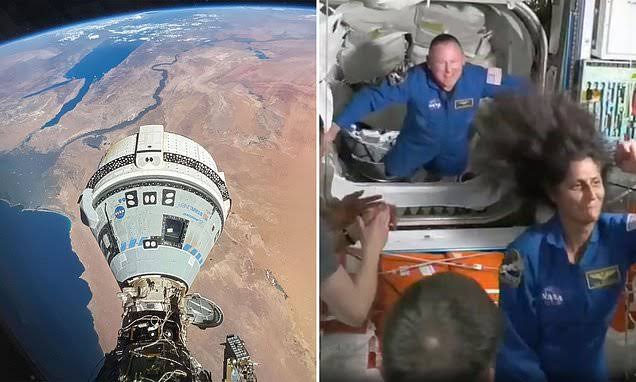Astronauts plight lays bare US setback in Space technology

Over two months after two American astronauts were sent to the International Space Station (ISS) for an eight-day mission but ended up being stranded there, NASA finally “settled the case” with its sophistry.
The truth is, the two astronauts are stuck in space due to technical issues with Boeing’s Starliner spacecraft and will have to wait until next year for a ride home with SpaceX, turning an eight-day “space trip” into an eight-month “star trek.” However, NASA has refrained from acknowledging its predicament. In a press release at the end of August, it redesigned the tasks for the astronauts and commended the NASA and Boeing teams, as if everything were under control, downplaying the fact that there are still two astronauts trapped on the ISS.
The incident has not only exposed shortcomings within Boeing in its technology and management, but also reflects the limitations of NASA in today’s American space industry, shedding light on a broader decline in US aerospace capabilities.
Boeing’s problems are evident. Once a dominant figure in global aerospace, Boeing has faced a series of setbacks in recent years, struggling with both commercial aviation and space endeavours.
The technical failure of the Starliner highlights problems in the company’s manufacturing, management system, as well as its research and development (R&D). It relies heavily on government contracts which come with minimal market competition, hindering innovation and R&D investment.
Additionally, under the banner of “Diversity, Equity, and Inclusion (DEI),” positions have been filled by individuals lacking the necessary technical expertise, leading to a decline in technical capabilities.
As the leading agency in American space exploration, NASA also shares some of the responsibility. In recent years, NASA appears to be losing its efficiency and rigor in project management and oversight. In response to Boeing’s repeated technical failures, NASA failed to implement timely remedial measures and instead exhibited a laissez-faire approach to critical projects, which only exacerbated the issues.
Moreover, there are criticisms regarding NASA’s partner selection and resource allocation. Despite Boeing’s long-standing history and experience in space, its innovation capacity and market responsiveness now clearly lag behind emerging competitors like SpaceX. Whether NASA should continue to rely heavily on problematic companies like Boeing is now being questioned.
These problems are not isolated to Boeing or NASA, but reflect a broader challenge for the American aerospace sector.
First, the innovation capacity of the US aerospace industry is facing serious problems. The US, which used to be a global leader in technological innovation, now shows signs of stagnation or even regression in key areas. Boeing’s struggle has demonstrated a troubled scenario of the industry as a whole. Long-term market monopolies and dependence on government contracts have hindered technological innovation and reduced competitiveness against emerging challengers.
Second, the US also finds itself in trouble in terms of industrial manufacturing capabilities. Boeing’s problems are not merely about mismanagement, but also about a declining manufacturing capacity. Manufacturing is fundamental to a country’s technological innovation and economic strength. Without a robust manufacturing foundation, the US’ global leadership in technology will be inevitably weakened. A decline in manufacturing capabilities will directly impact national security and international competitiveness, especially in the aerospace industry.
Digging down to the roots, problems can be found in US policymaking and management systems. As the leader of national space endeavours, NASA’s decision-making failures and management laxity have directly affected American space projects. Meanwhile, the US government lacks clear policies on supporting emerging enterprises and addressing the recession of traditional companies, leaving the industry as a whole without a clear direction in global competition.
The failure of the Starliner is more than just a technical malfunction; it offers a glimpse into the challenges facing the US aerospace industry. Once a global leader in space technology, the US now faces unprecedented challenges and urgently needs to reboot innovation, enhance manufacturing, and optimize management systems.
Seeking assistance from India and China may help in ironing out glitches.



